 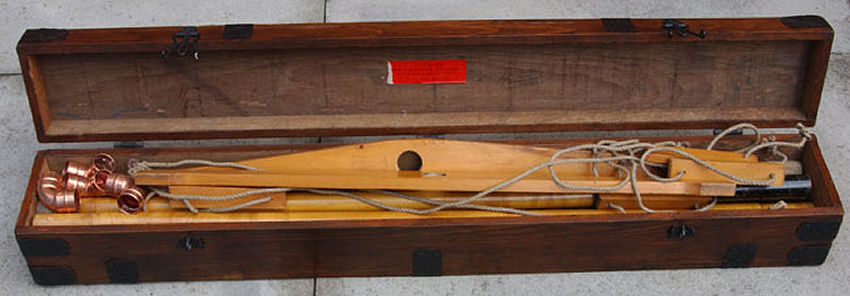 |
|
|
Portable magic lantern screen. Solid oak wooden case measuring 41 x 6 x 6 inches (104 x 15 x 15 cm), containing all the parts to put a wooden frame together. The linen or canvas screen had to be transported separately. Label and stamp inside lid for Lizars Opticians of Glasgow. (From this set the original corner joints are missing and have been replaced with copper pipe angle bends). Frame measures 80 inches square (203 cm) when set up. |
 |
|
Right: Similar portable lantern screen with the white canvas lashed with sewn tapes to the frame from a
German catalogue, c.1900. The inserted image comes from a glass strip made by Johann Falk. |
|
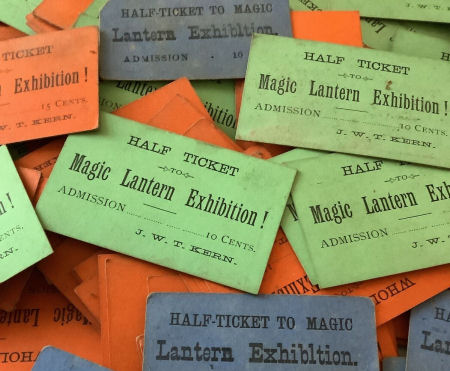 |
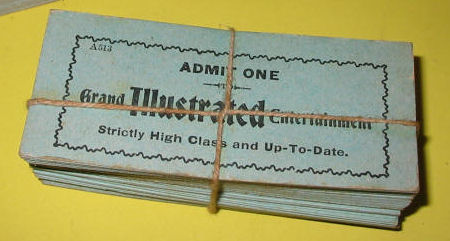 Admission tickets. |
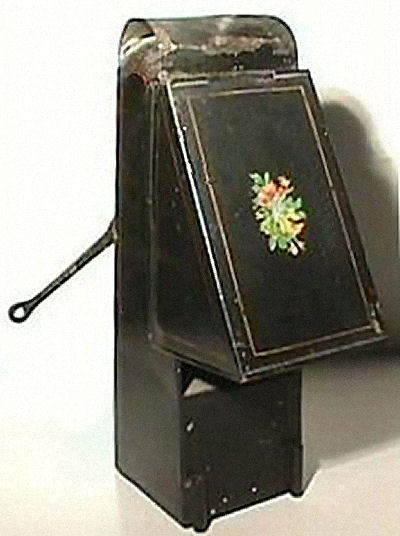 |
Magic
lantern reading lamp. One of the most important components of the lanternist's equipment was the lecturer's lamp. Its function was twofold: to throw some light on the book or papers of the lecturer and to give a signal to the operator to change slides. Some lamps were fitted with a bell to give an audible signal for the next slide. Sometimes the lamp was fitted to a reading stand. It was lit by candle, paraffin or rape oil. This fine black painted reading/preview lamp with floral decorated/gold pinstriped exterior has a hinged shade which could be lifted or lowered to adjust the amount of light. By means of a handle a light signal could be given to the lanternist. |
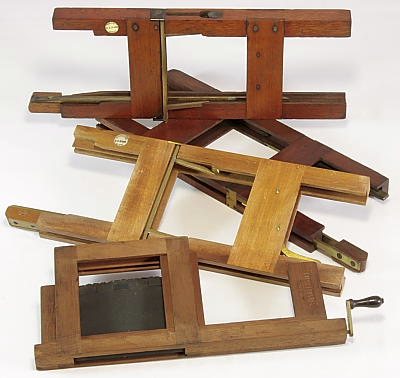 |
Slide
carriers. Initially wood-framed slides were placed directly in the magic lantern. With the arrival of unmounted glass slides in 3 ¼ inch square and 3 ¼ x 4¼ inch formats in the last decennia of the 19th century, slide carriers became necessary.  This is an early mahogany single slide carrier for the 3 ¼" square slides. It measures in the closed position 17.4 cm x 11.5 cm. |
|
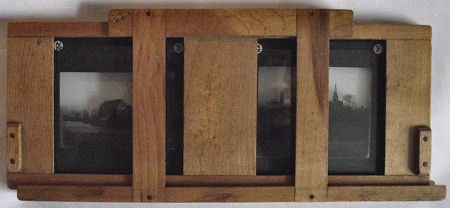 |
'Duplex' carrier for two slides, in which an inner wooden frame
simply slides from side to side to change the slides. There were a lot of variations over the years. Measures in closed
position 27.8 x 11.5 x 2 cm. |
|
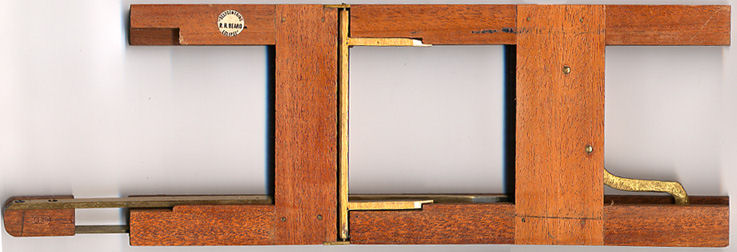 |
||
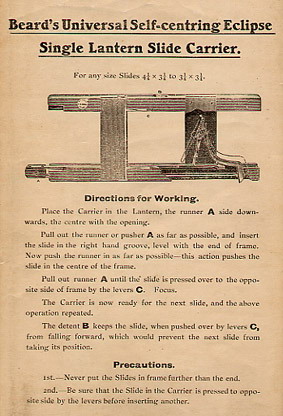 |
Beard’s
Universal Self-Centring Eclipse Single Lantern Slide Carrier. With early slide changers it was necessary for the lantern operator to have access to the far side of the lantern, where he had to remove the used slides from the carrier. Later models returned the used slides to the operator's side of the lantern, where they could easily be removed without the operator having to lean over the lantern. One of the most ingenious slide carriers was The Eclipse from Beard, patented in 1886. Each slide could be pushed in front of the previous one, prior to removal of the latter. For a short interval the slide is out of focus whilst the first slide is withdrawn and the second snaps into place. The whole assembly is 11” long, 4 ½" high and 7/10” thick (28,5 x 11,5 x 2 cm). The slide changer ‘runner’ on the bottom pulls out just over 6”. According to the original instruction leaflet it is suitable for any size slide from 3¼ " x 3¼ " to 4¼ " x 3¼ ". Carrier has a small insert that says ‘R.R.Beard, Self-centring Eclipse’. |
|
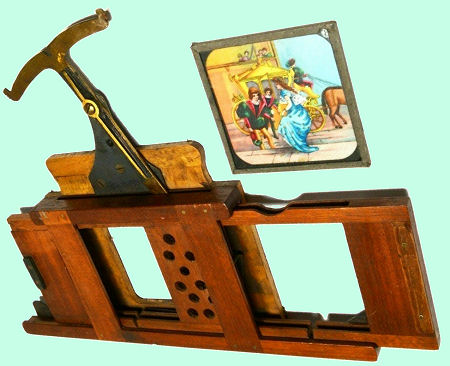 |
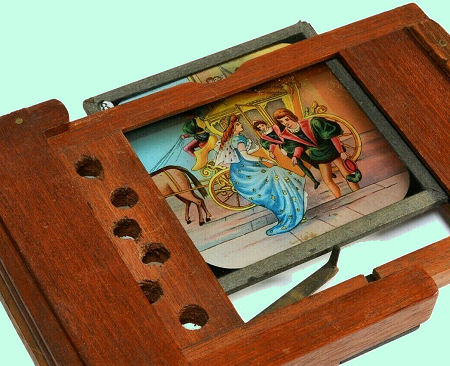 |
|
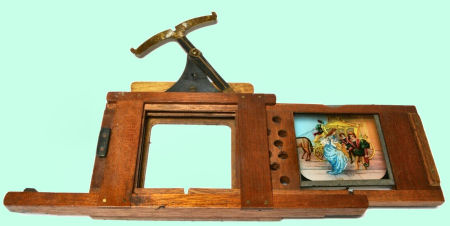 |
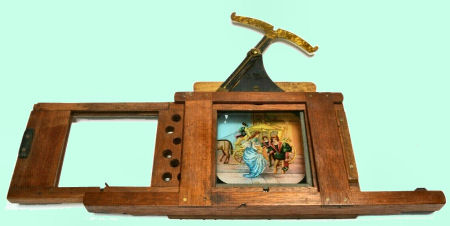 |
|
|
Remarkable magic lantern slide
changer from Archer. The slide is automatically lifted from the slide after
showing. During the exchange, the gaps between the two compartments ensure a
smooth transition. Photos: www.cool-antiques.co.uk. |
||
|
Always good to hold by the hand are a
few magic lantern slides that announce an interval or that urge the audience
to be silent. Lanternists also often had some clear slides with them that
quickly could be written on with a short text. Sometimes the glasses were
sooted by means of a candle and written by a needle. (also read Motto-slides) |

|
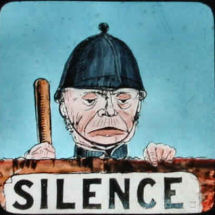 |
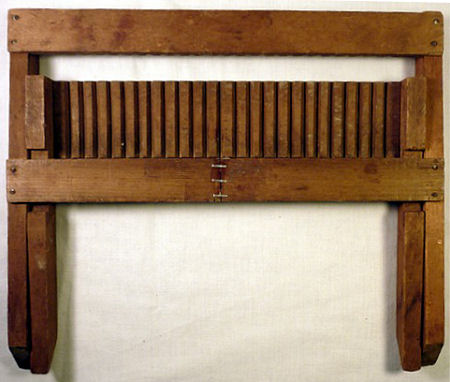 |
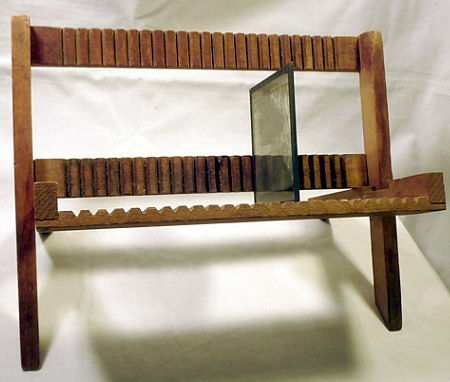 |
|
|
Slide stand. This wooden rack was originally intended for the drying of developed glass negatives, but was and is also used by lanternists to 'park' the lantern slides they want to keep on hand during the performance. The 'drying rack' can store 24 plates in the grooves. When folded, the dimensions are 30.5 x 25.5 cm. |
||
|
Wooden Kodak No. 1
Lantern Slide Box. With the introduction of 3 ¼" square standard-size unframed glass slides, various slide containers were produced to protect slides in transit. This simple wooden case has grooves at the sides to separate each slide and a numerical index stuck inside the lid. |
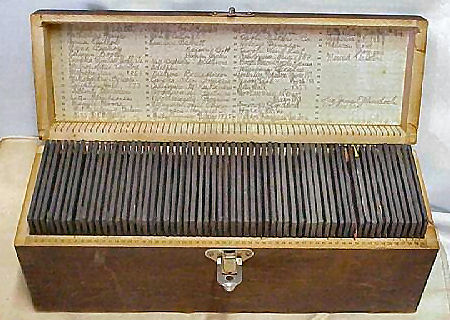 |
|
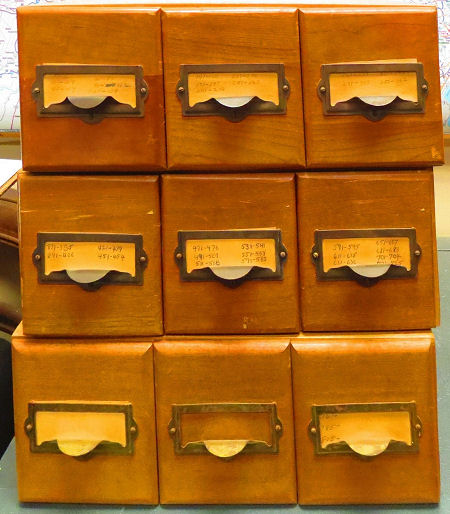 |
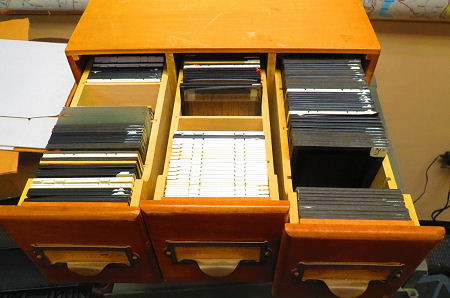 |
|
|
3 wooden file boxes for magic lantern slides. Each case measures about 13.5 inch wide, 18,5 inch deep and 5 inch high (c. 34.5 x 47 x 12.5 cm). |
||
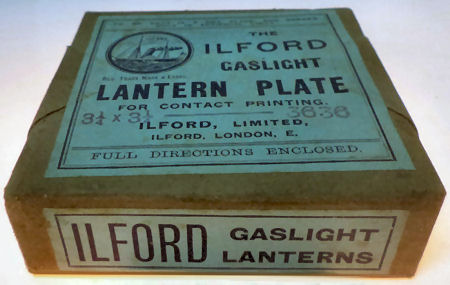 Gaslight plates. Unopened packet square Ilford gaslight plates for contact printing. The plates measure 3.25" x 3.25" (8.2 x 8.2 cm). |
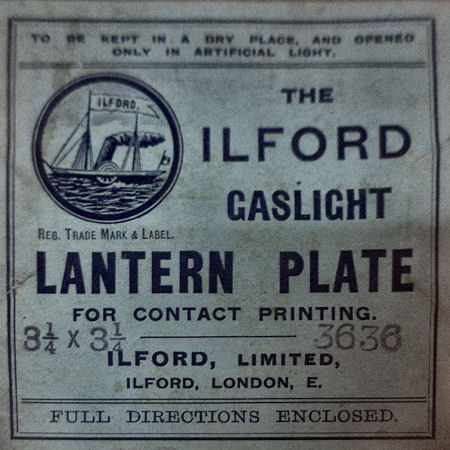 |
|
 |
Magic lantern lime light tongs These tongs were used to hold and remove the cylinder of lime from the limelight burner. The pointed end also had the use of boring the hole down the middle of the lime. This useful tool measures 6" (15 cm) long. |
|
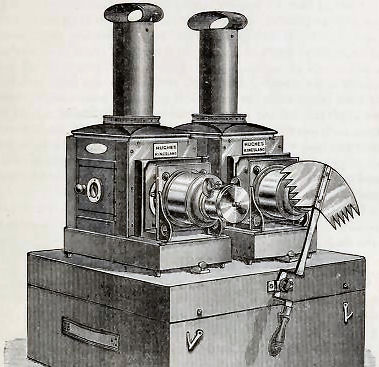 Magic Lantern Fader, used to create a smooth transition between slides when using two similar magic lanterns. The movable rotation spigot was located on the lantern or its stand, allowing the Fader to be rotated in front of the lenses. Item measures 43 cm long (17 ins) and 28 cm wide (11 ins). |
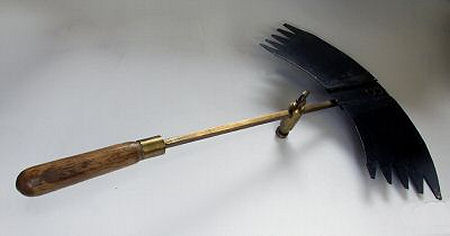 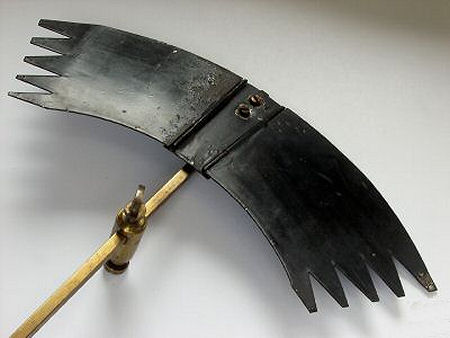 |
|
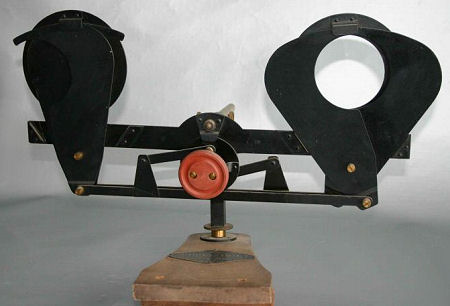 |
This Mechanical Dissolve Control for
two magic lanterns has been manufactured by "Service des Projections Lumineuses de la BONNE
PRESSE", 5 rue Bayard, Paris 8e, L'UNIVERSEL, in the 1900's. It is
patented: S.G.D.G. The unit was placed before a couple of
identical magic lanterns to make it possible to perform
dissolving views. |
|
 |
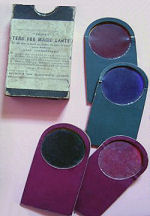 Set of five Slide
Tinters, used for giving more or less the effect of a coloured
slide to ordinary black and white photographs and also for a variety of
other effects like sunsets, moonlights, etc. by a clever application of different tinters for sky and foreground.
Some magic lanterns have slots in the body
between condenser and slide stage for inserting the filters......
Set of five Slide
Tinters, used for giving more or less the effect of a coloured
slide to ordinary black and white photographs and also for a variety of
other effects like sunsets, moonlights, etc. by a clever application of different tinters for sky and foreground.
Some magic lanterns have slots in the body
between condenser and slide stage for inserting the filters......
....other lanterns have a slot in front of the projection lens for this purpose. |
|
More accessories...... |
||
| |
©1997-2022 'de Luikerwaal' All rights reserved. Last update: 30-09-2022. |